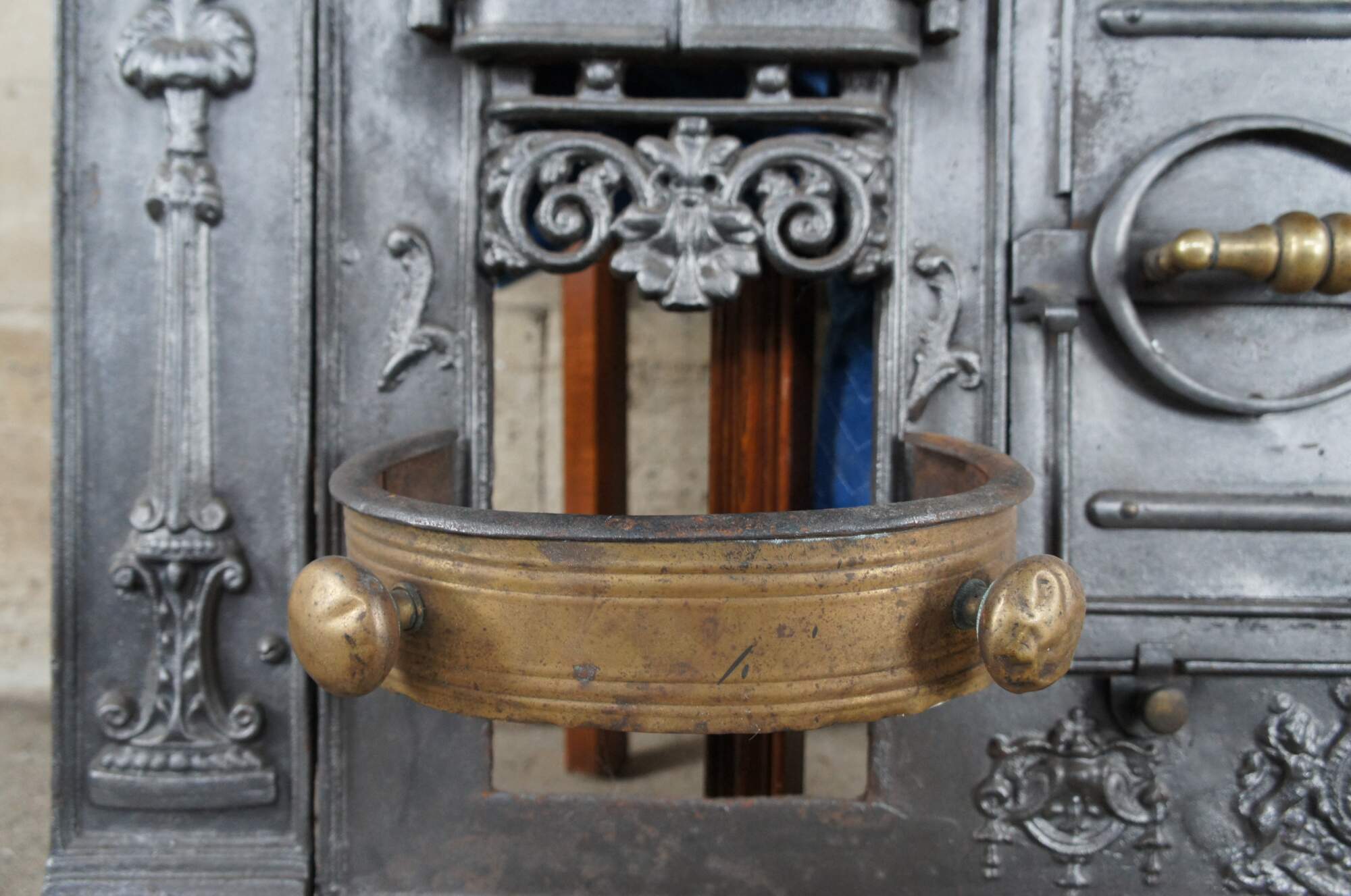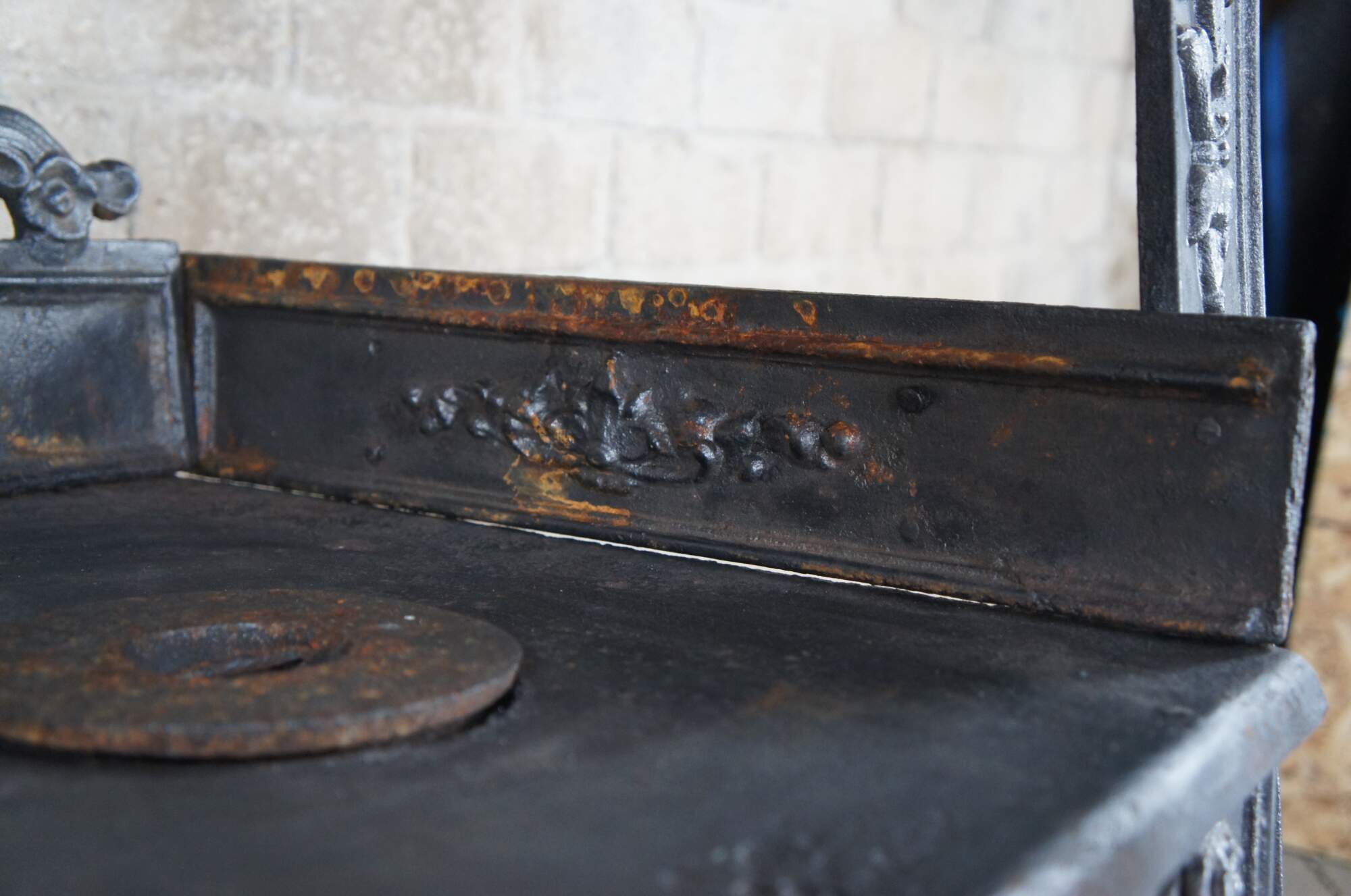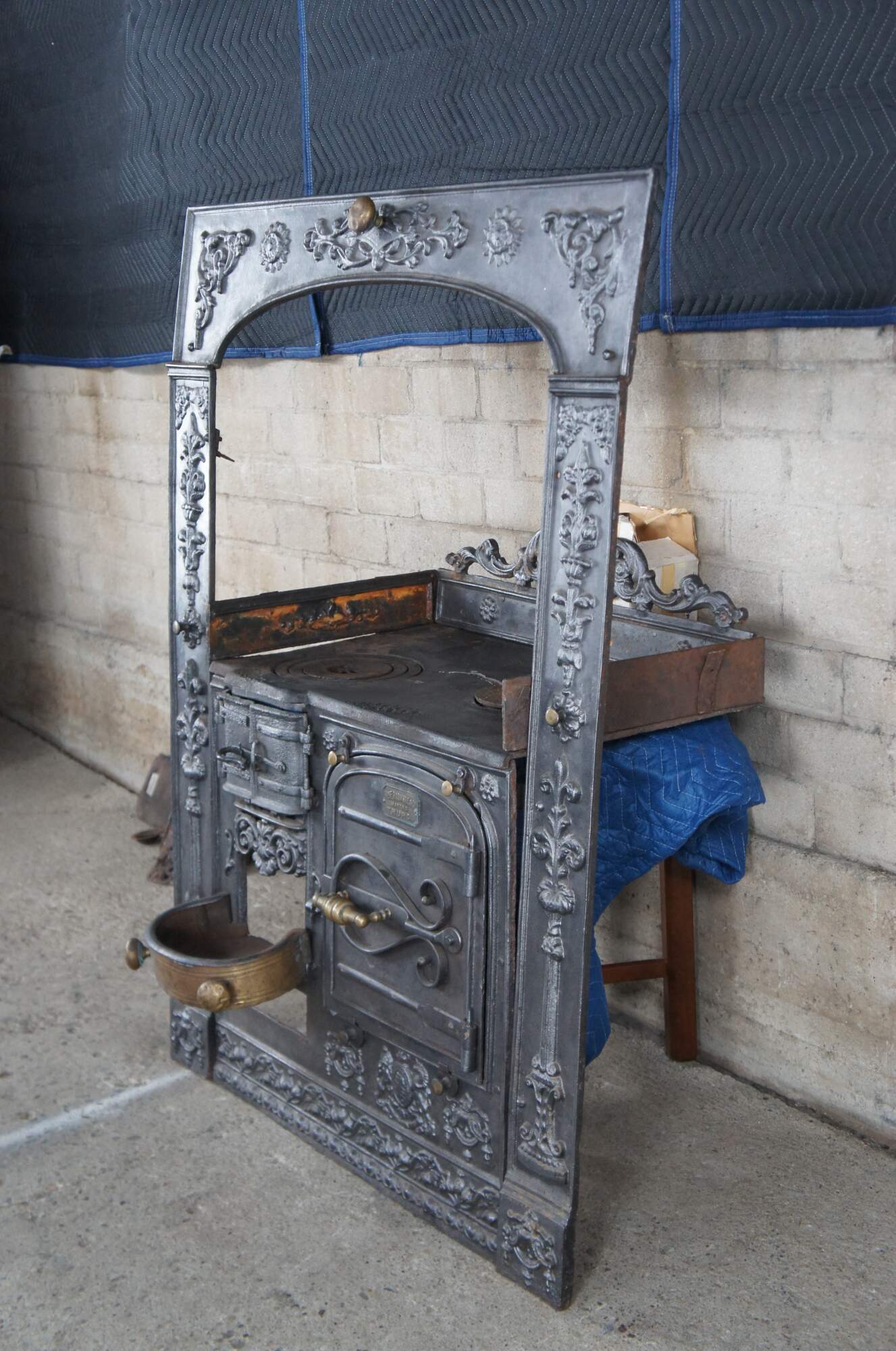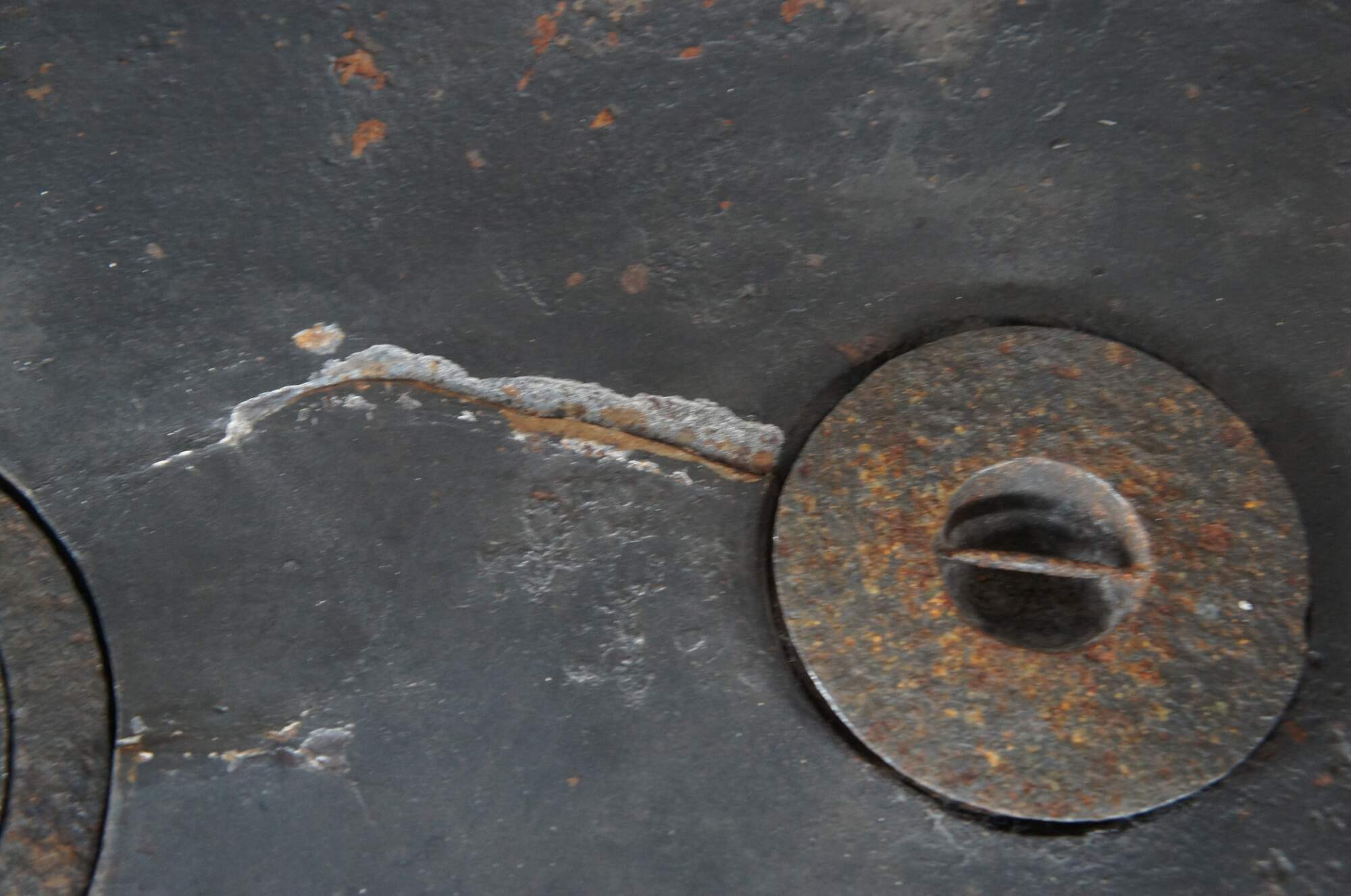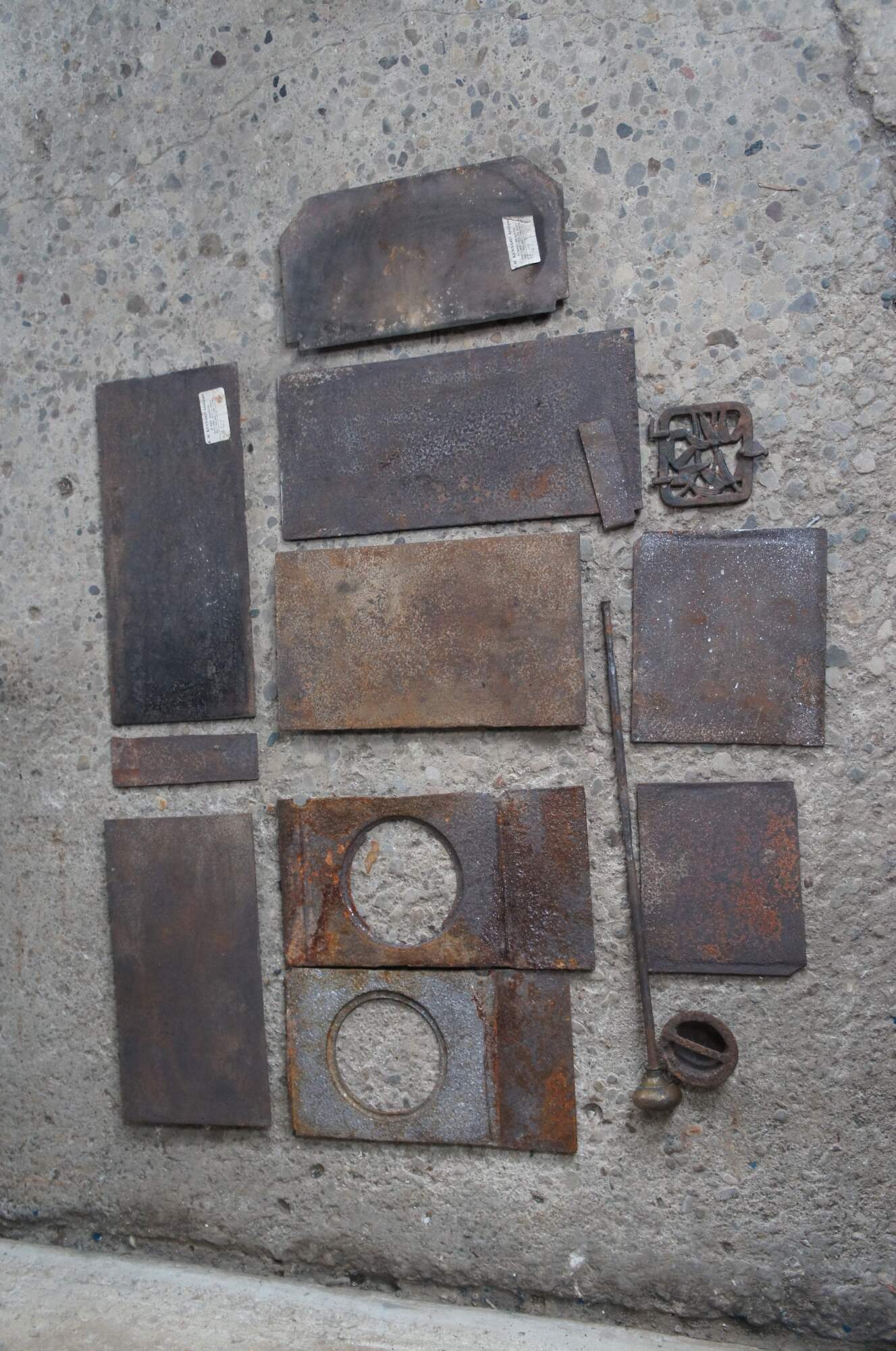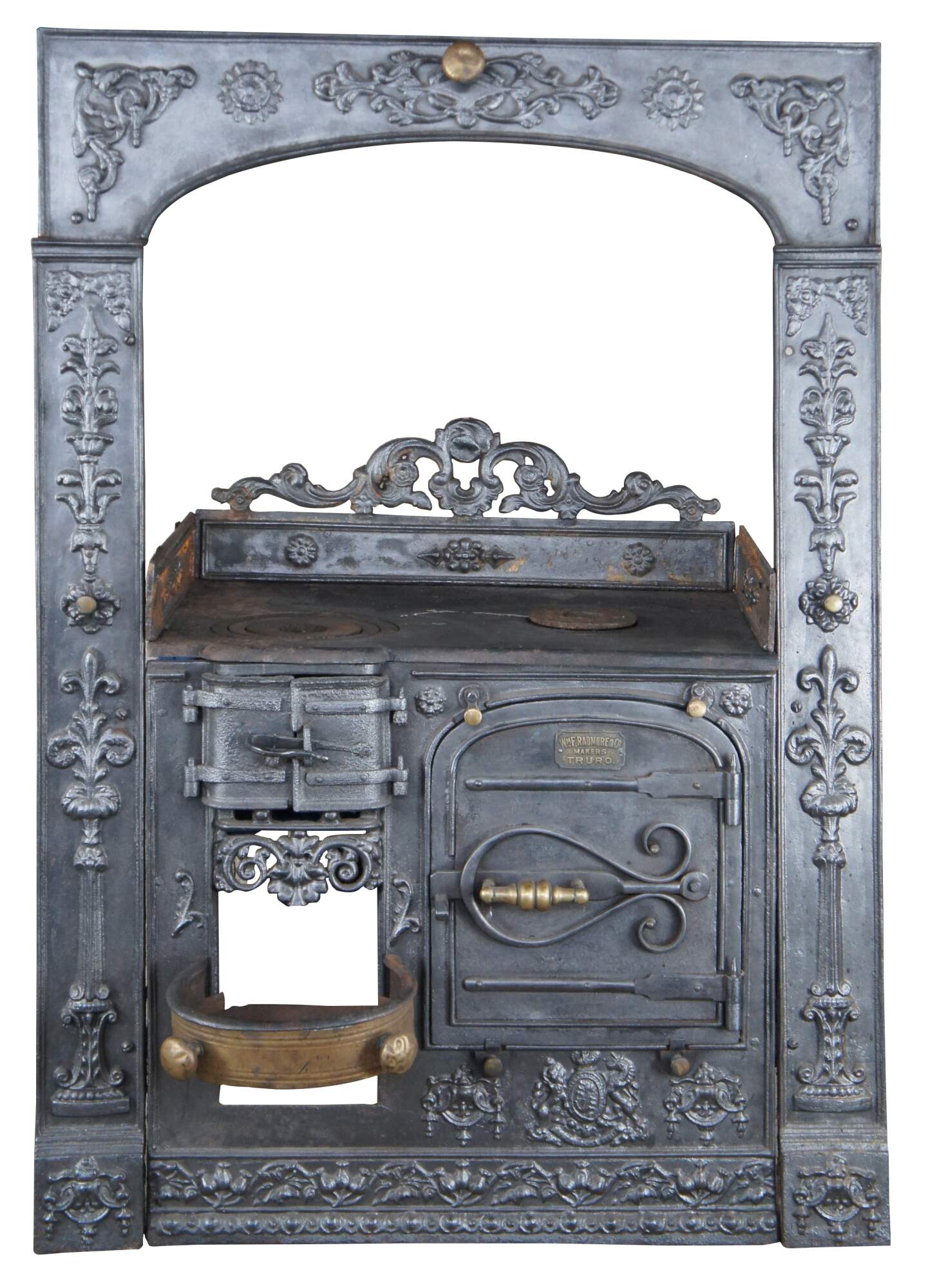
Antique 1840s Cornish Cast Iron Kitchen Range Oven Fireplace Stove Cooker 57"
Sold
Shipping:
Free Shipping Included
Delivery:
Estimated 2-15 Business Days
Payments:
Credit Card, Check, Cash, PayPal, Apple Pay, Venmo
Returns:
30 Days 100% Money Back Guarantee, Buyer Pays Return Shipping
Description
Antique 1840s Cornish WmF Radmore & Co Makers Truro range cooker or fireplace stove featuring brass and cast iron construction
Blacksmiths of the time, manufacturing these ranges nicknamed them the 'Slab'. They featured heavy ornamentation with scrolled and fleur de lis accents.
The Cornish Range was known locally as a ‘Slab’ (this being another name for a hotplate). It was the most efficient and decorative of the Victorian kitchen ranges.
What little research has been done indicates that the general arrangement arrived around the 1830’s in Redruth. They remained in production until just before the Second World War, the last being made by St. Just Foundry in Penwith.
During the mid to late Victorian age, just about every Cornish house would have had a Cornish Range, from the most common 30 inch wide hotplate in the working class cottage to the huge Manor House ranges with slabs up to 6 feet in length.
During this period, apart from the big foundries like Harvey's, Copperhouse, Holman's and Piran, most Cornish towns had one or more small foundries, especially if they were situated in one of the mining districts. All of these foundries, apart from selling complete ranges themselves, would also sell castings to the towns and village blacksmiths to complete in their own style and sell under their own name.
Using Camborne as an example, there was the huge foundry and engineering works of John Holman, situated in the north-east of the town, the smaller foundry of E T Sara at the foot of Trevu Hill and somewhere in the town a blacksmith by the name of W Jenkin. All making and selling ranges under their own name.
One decorative relief common to most ranges is the Royal Coat of Arms, which is normally featured once, if not twice. Whereas the majority of the decorative designs are flowers, fruit and neo-classical scrolls etc. One unusual feature, which occurs quite often but as yet to be explained, is a bird with an eagles beak and a crest on its head.
The foundries have certain key designs which are generally incorporated and these can be used to identify the castings, for example, Holman's of Camborne normally have a large rose, thistle and shamrock in a cluster below both lower corners of the oven.
As originally designed, the range has a body built from Common London Brick, approximately 160 in a 30” slab, all held together with lime mortar plus a small number of fire bricks for the fire box.
There were several methods of operation, the most common being the hot smoke passed over the top of the oven, down the far side, then underneath. From there it would travel into a central brick flue which ran from the foot to the top of the range. Two thirds of the way up the flue was the damper to control the draught. This was pulled out to open and was the main way of controlling the fire, albeit not very efficiently, hence the section of verse in a well-known Cornish folk song ‘you push the damper in and you pull the damper out and the smoke went up the chimney just the same’.
Some were designed with ovens on the left-hand side and others on the right-hand side to suit the chimney in the house. Later ones were fitted with back boilers.
This demise was brought about by several things, ie. The disappearance of the numerous towns and village foundries which had relied so heavily on the 19th century mines coupled with the arrival of modern ranges like Aga and Raburn etc.
Condition
Fair antique condition, wear and distressing commensurate with age and use, rust, oxidation, past repairs to slab, some missing pieces, will need install and assembly.
Dimensions
40" x 57" x 20", cookng surface 18" x 29", bottom tray 8.5" depth, 14.5 width of door



